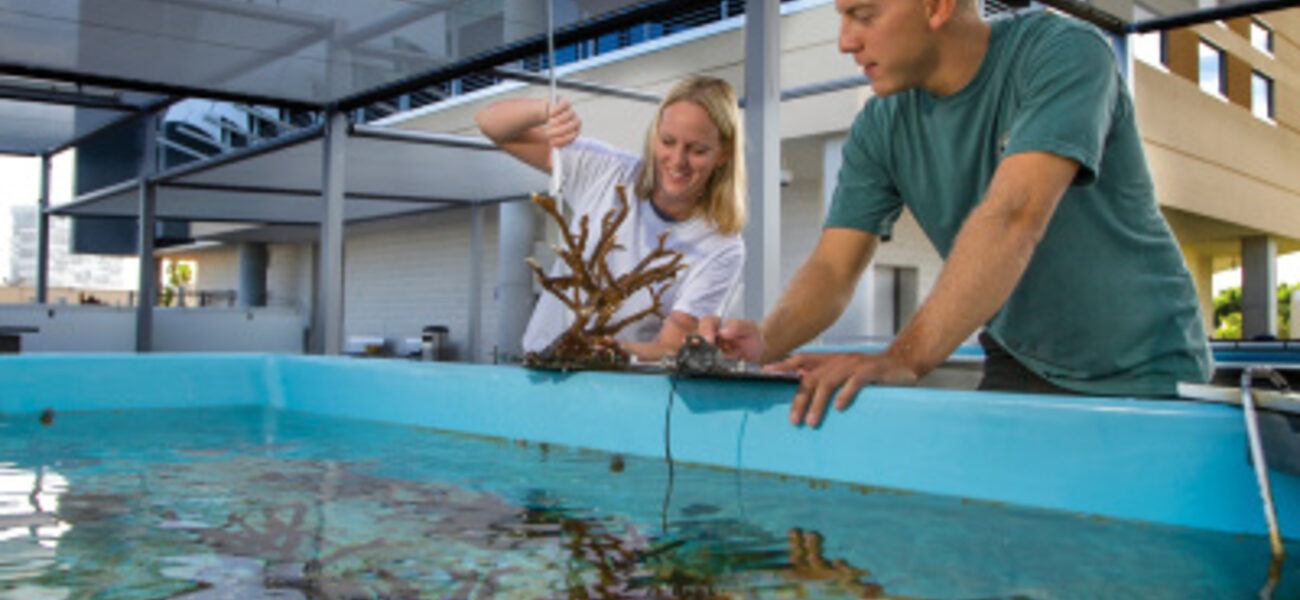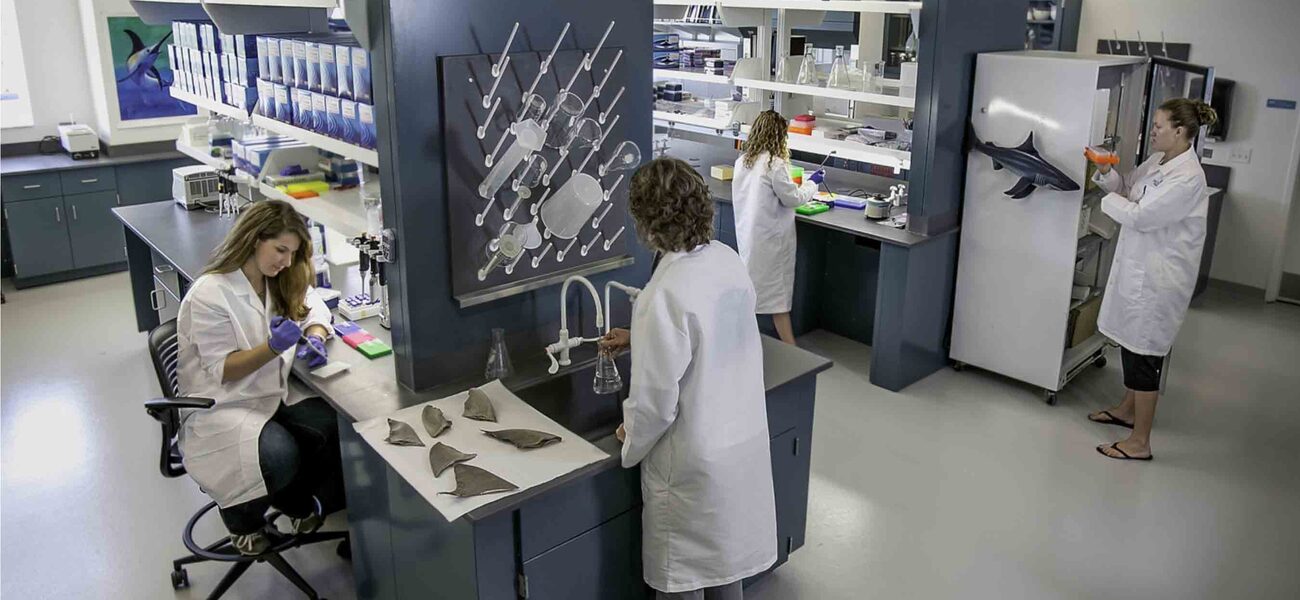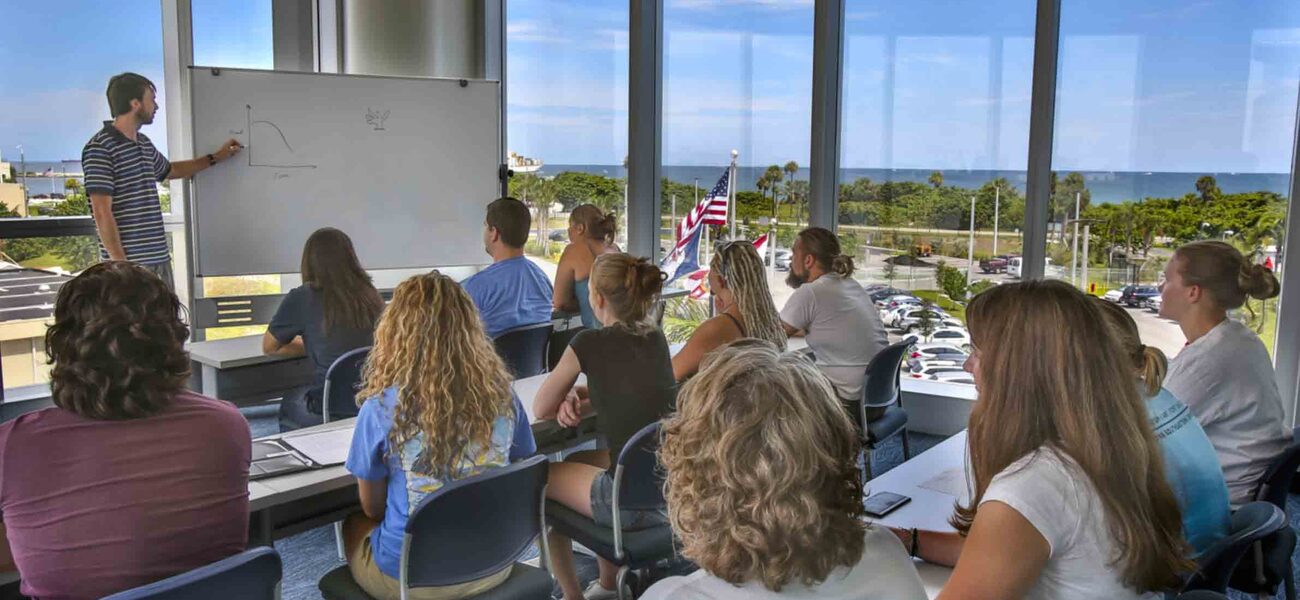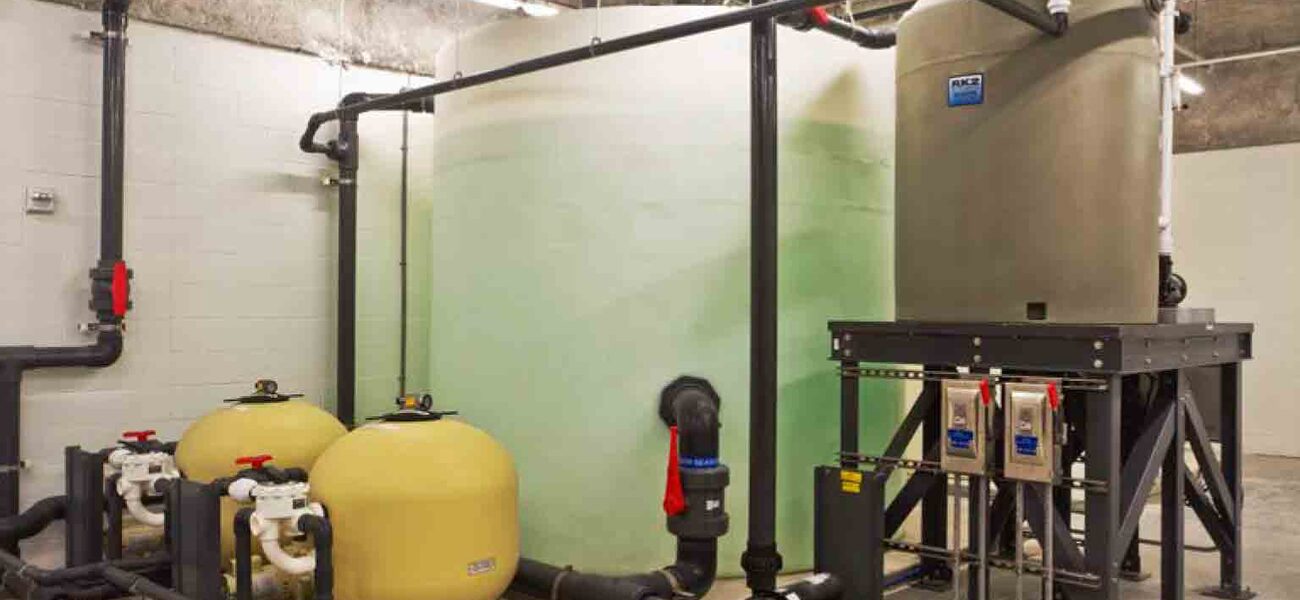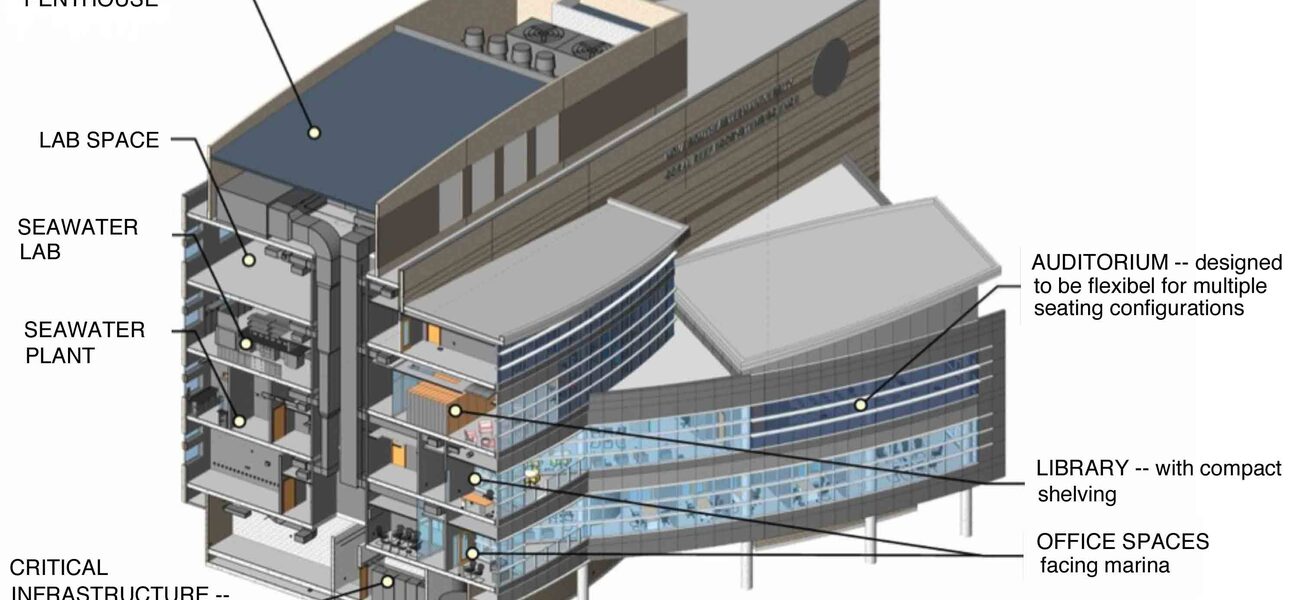Located on the coast of South Florida with easy access to coral reefs, the Center of Excellence for Coral Reef Ecosystem Science at Nova Southeastern University is the only research facility in the U.S. dedicated to this line of research. The five-story building, which is designed to withstand hurricanes, accommodates the special requirements of multiple disciplines—geospatial analysis and mapping, biodiversity, plant and animal studies, genomics, and hydrodynamics—and unites them in a single collaborative environment.
Collaboration spaces, offices, and dry lab spaces are located on the north side of the building. A lab block on the south side of the building contains a “spine” of 15 flexible, adaptable laboratory areas, ranging from highly wet, seawater-based environments to dry spaces for data and image analysis. Based on a column-free universal grid module, a 31.6-by-31.6-by-14-foot dimensional framework ensures that laboratories remain flexible enough to accommodate multiple disciplines and evolving programs, systems, and technology.
Flexibility was achieved by placing all shafts and vertical circulation in the center of the building to remove any MEP encumbrances; creating perimeter zones for sinks, seawater and gas outlets, and extraction devices; plug-and-play overhead and under-floor utilities; and modular, moveable furniture.
The building features an innovative seawater plant that produces and distributes a continually circulating supply of high-quality seawater to the entire building. This supply is monitored 24/7 for pH, oxygen, conductivity, salinity, oxidation reduction potential, and temperature. Raw seawater from two on-site wells is batch treated twice for clarity and temperature adjustment in a 5,000-gallon filtration tank. Treated water is pumped to storage tanks in the penthouse, and distributed by gravity to the interior and exterior seawater labs. For the extremely sensitive science of coral propagation, a third seawater treatment loop is specifically designed to further clarify the water quality and temperature. Removal is also highly controlled by a return system of filtration and tanks to ensure that seawater is returned to the ocean at the optimum temperature and quality.
At the center of the building on each floor, adjacent an open-plan office area, are lounge seating and copying and printing facilities. A flat-floored, 100-seat multipurpose auditorium is located at level three, and a stack of meeting rooms at the eastern tower terminates in the dean's boardroom on level five. The second floor is home to a café and terrace that can be used for informal collaboration and organized events.
Other program elements include:
- Wet labs for microbiology and genomics
- Geology-style labs for scelochronology
- Electronics labs for ocean hydrodynamics
- Computational labs for geospatial analysis and mapping
- A marina and scuba diving facility at Port Everglades
The new facility, which allowed the program to add 22 new academic positions and employ 50 graduate students, is the first phase of the University’s Oceanographic Center Master Plan. At full build-out, the site will contain a research aquarium and conference and education center.
| Organization | Project Role |
|---|---|
|
CannonDesign
|
Principle Architect
|
|
ACAI Associates
|
Associate Architect
|
|
Moss Miller, LLC
|
Builder
|
|
Craven & Thompson
|
Civil Engineer
|
|
Bliss & Nyitray
|
Structural Engineer
|
|
Tenji, Inc.
|
Seawater Systems Consultant
|
|
LaFleur Associates
|
Lighting Design
|
|
EDSA
|
Landscape Architect
|
|
Engineering Express
|
Glazing and Curtainwall Design
|
|
Dunkelberger Engineering & Testing, Inc.
|
Geotechnical and Testing
|
